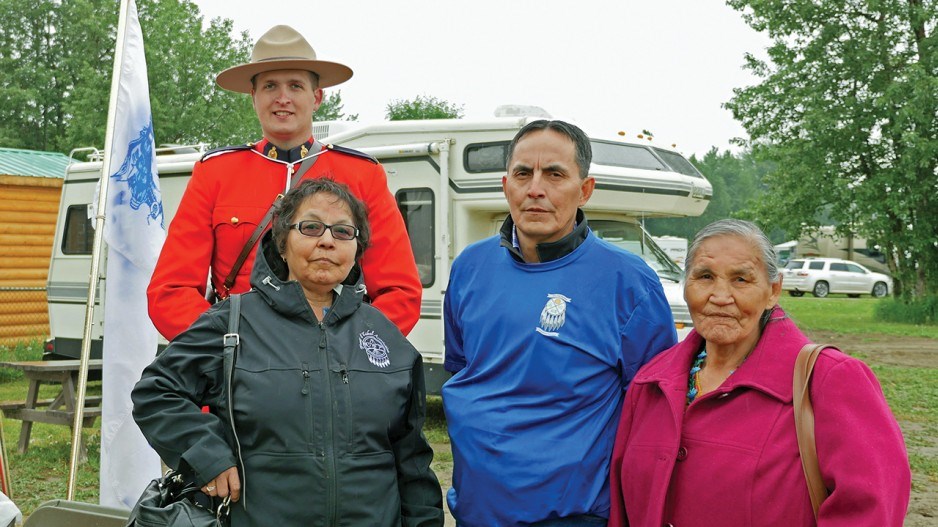As the politics of resource extraction continue to unfold across the province, British Columbians are divided on the issue.
First Nations members have set up a camp on Lelu Island near Prince Rupert in hopes of killing the liquefied natural gas (LNG) terminal proposed for the area. The Enbridge Northern Gateway and Kinder Morgan Trans Mountain pipelines are both encountering various levels of opposition and drawing controversy, and BC Hydro recently won a BC Supreme Court battle against two First Nations bands that were seeking an injunction against its $9 billion Site C dam project.
For Shona Nelson, the band administrator at Doig River First Nation, one thought keeps coming to mind.
“It’s all about balance; I think that’s the key word,” said Nelson.
Doig River, which has 132 members across about 1,000 hectares in the Peace River region, is part of the larger Treaty 8 Tribal Association in the area – an overarching advisory services body. Right now two LNG projects are in different stages of development in the area – TransCanada’s (TSX:TRP) Prince Rupert Gas Transmission project and Coastal GasLink Pipeline project. Doig River has signed pipeline benefits agreements for both projects and will receive millions of dollars in construction-related milestone payments and continuing benefits.
Nelson said working with TransCanada has been smooth, but she adds that the same can’t be said for the provincial government.
“In terms of the regulatory agencies, the province is problematic to work with at times,” she said. “Because we had to fight to get on the consultation board for the environmental assessment, and then going through the regulatory process with the [BC] Oil and Gas Commission had its challenges.”
In an emailed response, BC Oil and Gas Commission spokesman Alan Clay said the commission “is proud of its partnership with Doig River First Nation around a pilot-project liaison program.”
“Working closely with commission staff, the community liaison supports creating greater community environmental awareness of oil and gas operations which includes ongoing development, safety, emergency management and response and restoration activities occurring within Doig’s consultation area.”
Members of Doig River have already started training for jobs such as heavy equipment operation and pipeline maintenance, in anticipation of getting work on these two LNG projects, Nelson said. She added the idea is to take part in the process and enjoy a share of its economic benefits, rather than fight the project at every step.
“Doig River takes a very proactive approach for our members and contractors to be prepared for the project and be competitive and get our foot in the door.”
The province issued environmental assessment certificates for both projects in the fall of 2014. Various other federal, provincial and local permits still need to be obtained before ground can be broken.
Estimates of the number of jobs during construction, and when each plant is operational, have not been released.
Doig River Chief Norman Davis said in a news release that the First Nation wants certain concerns to be taken into account.
“Our pipeline benefit agreements with the province have created even greater possibilities for economic development within the Doig River First Nation,” Davis said. “Development can’t happen at the expense of the environment, though, which is why we look forward to further work with the province on environmental stewardship opportunities.”
Nelson added that local support for the projects will vanish if environmental issues are not given serious attention.
“With every project there’s always environmental concerns because there’s always the concern about cumulative impacts – the cumulative effects of any resource development on our members’ ability to practise fair rights on the land,” he said. “We do a lot of work on traditional land-use studies with our lands department and membership to make sure key issues and concerns are addressed.”
Garry Oker, who was the chief of Doig River from 2002 to 2005 and now runs his own cultural employment strategy consulting business, said it’s important not to lose sight of the big picture.
“The challenge has always been going project by project, and the process is not really designed to look at the cumulative impacts of all these projects together.”




